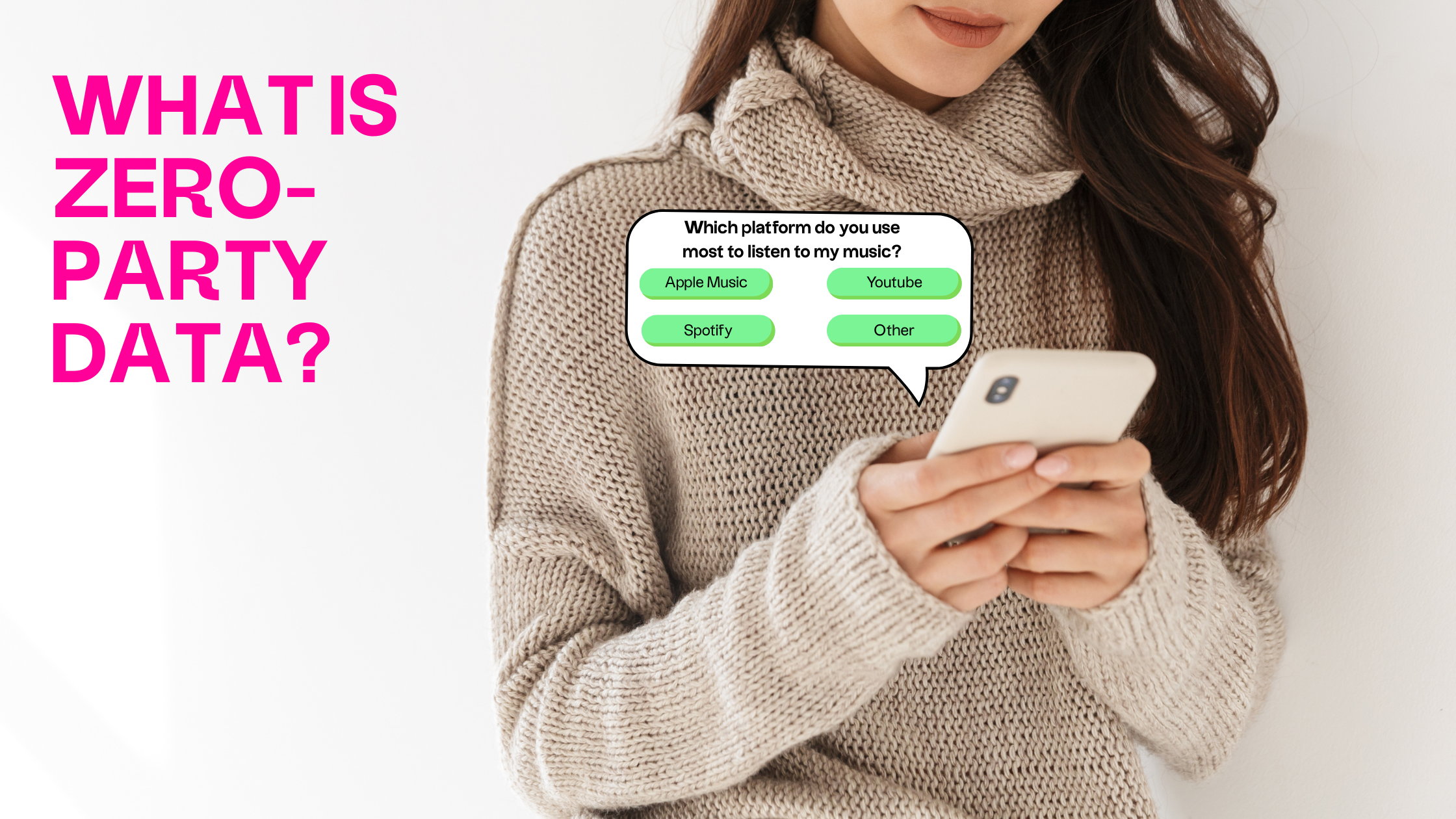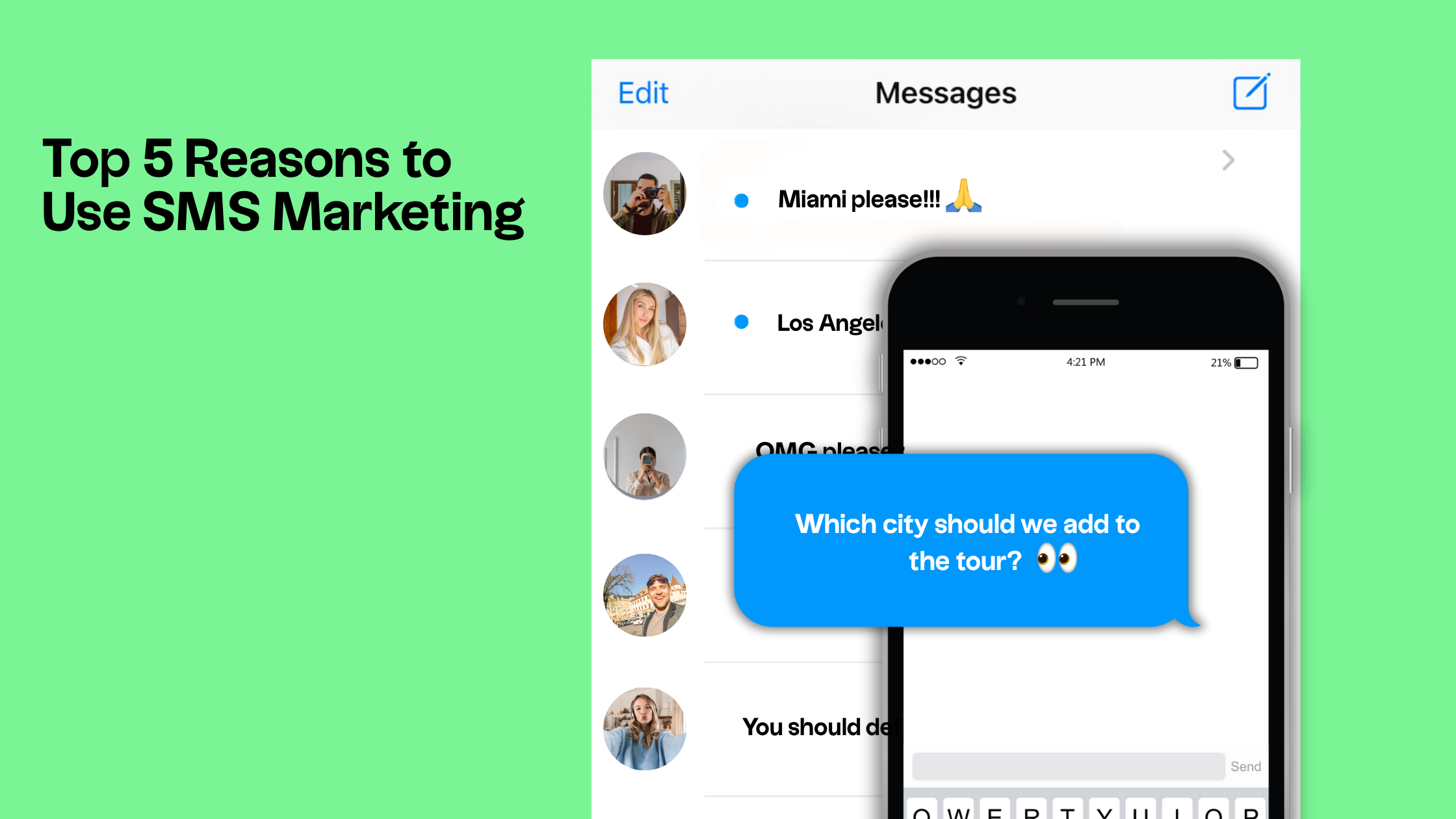BLOG POSTS
What Is Zero-Party Data and How to Use It for SMS Marketing

Zero-party data is essential in SMS marketing because it is information that customers willingly and proactively share with you, making it highly accurate and directly relevant to their needs. Zero-party data is offered transparently and with consent, building trust between brands and their audiences. There is no better way to secure credible customer data than directly from the customer themselves.
By leveraging zero-party data, marketers can deliver tailored content and offers through SMS, ensuring every message feels relevant and valued.
If you're using SMS marketing or thinking about sending marketing text messages through a text messaging platform like Community, understanding the benefits and how to use this data can completely change how you engage your audience. Because this isn’t just about tracking clicks or crunching numbers; it’s about building deeper connections and stronger relationships with your audience.
At its core, leveraging this data means strengthening conversations that drive real engagement with your audience, having direct access to the people who actually want to hear from you and delivering messages that feel personal, timely, and real.
Let’s break down what zero-party data really means, how it’s different from first-party data, why they matter, and how to use them to get better results from every single text message you send.
What Is Zero-Party Data?
Zero-party data is information customers willingly provide to brands, knowing they will use it, such as preferences, intentions, or interests, with the expectation that it will improve their experience. This transparent exchange builds trust. This trust leads to more personalized, engaging SMS campaigns that resonate with recipients and drive higher engagement and loyalty. It allows brands to use that information to customize messages and engagement, while respecting data privacy. Since the data comes directly from your audience, it’s generally more accurate and reliable, making it a valuable asset.
Examples of zero-party data include:
- Responding to a poll via SMS, like “Are you more into skincare or makeup?”
- Filling out a quiz during sign-up: “Pick your top 3 wellness goals”
- Filling out an RSVP form for an upcoming event or webinar
People are more likely to share this information when they believe it will lead to a better, more personalized experience.
Zero-Party Data Vs. First-Party Data
Both zero- and first-party data are collected through direct interactions, but they differ in how they’re gathered. First-party data is behavior based information you gather through your direct relationship with your audience. It’s based on how they interact with your brand – what they click, buy, or reply to.
Examples of first-party data include:
- When someone signs up for texts and shares their name or location
- Clicking a product link in a message
- Replying “Yes” to RSVP for an event or texting back “More info”
Together, they provide a complete picture of what your audience says they want, and how they act.
Why Does Zero-Party Data Matter?
Most marketing platforms still rely on first-party data – tracking clicks, conversions, and behavior. But zero-party data tells you what people want. And when you’re communicating over SMS, a channel built for intimacy and immediacy, that level of clarity is a game-changer.
Using zero-party data gives brands a competitive edge. By understanding an audience’s preferences, interests, and pain points, brands can tailor their communication to speak directly to what matters most to them, which drives deeper engagement and long-term loyalty.
When you rely on platforms you don't control, like social media or email, your message can easily get lost, and it can feel like shouting into the void. SMS gives you direct access to your audience. And with zero-party data, every message becomes more relevant and impactful.
Think of it this way: relying on platforms like social media or email to reach your audience is like renting a house. You may live there, but you don’t own it, and your landlord (aka the algorithm) can change the rules at any time. Your reach is limited, and your access isn’t guaranteed.
Collecting zero- and first-party, on the other hand, is like buying your own home. You own the relationship. You have direct access to your audience on your terms, and you can build long-term equity in the form of loyalty, engagement, and trust.
That’s what makes SMS marketing so powerful: it’s direct, immediate, and lets your audience feel seen and heard because the messages they get are relevant and personalized to them.
How to Use Zero-Party Data to Improve Every Message You Send
Collecting zero-party data is powerful, but what you do with it is what really transforms your SMS marketing.
Instead of blasting the same message to everyone, you can use this data to segment your audience and send messages that actually feel personal. Whether it’s launching a new collection, promoting a limited-time offer, or sending a personalized thank you, this data helps you send the right message to the right people.
Here’s how it works in practice:
Segment your audience by interests, purchase behavior, or preferences that your audience has shared so you can send more targeted messages
- Personalize your texts based on what they’ve clicked on, responded to, or told you directly.
- Deliver value with messages that feel like a real conversation, and not just another generic alert.
- Time your messages to align with when people are most likely to engage
- Refine your content based on what people click, reply to, or ignore
- Stay responsive: Use replies and responses to guide what you send next
With a platform like Community, all of this becomes simple. You can manage contacts, automate responses, deliver relevant texts at scale, and pivot your messaging strategy, without sacrificing the personal touch.
How Chris Harder Used Community to Drive $324K in 24 Hours
Entrepreneur and podcast host Chris Harder used Community to launch his $4,000 business course, Fast Foundations Mastermind, and turned conversations into serious revenue.
Using Community’s clustering responses feature, Chris and his team grouped interested members based on self-selected interests (zero-party data) and tracked how they engaged over time (first-party data). They sent voice memos, answered questions, and built real relationships through text messaging.
On launch day, a single early access text message drove a 42.7% click-through rate and $324,000 in sales in just 24 hours.
The takeaway? When you combine the data your audience willingly provides with how they naturally engage over time, text marketing becomes one of the most powerful tools in your strategy.
The Bottom Line on Zero-Party Data
At the end of the day, your audience wants real, meaningful communication. When you use zero-party and first-party data to understand who they are, you’re not just sending messages, you’re building relationships. And that’s what modern SMS message marketing is really about.
If you're ready to explore how Community can help you turn zero-party data into highly-personalized messaging, let's connect.


